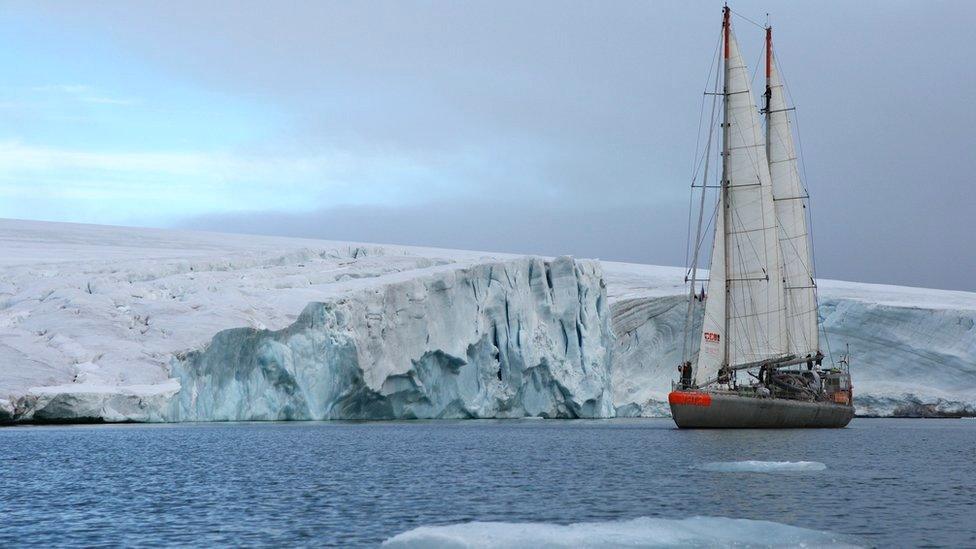Hundreds of thousands of viruses in oceans
- Published

The Tara sampled the global ocean in a 2009-2013 expedition
The oceans contain almost 200,000 different viral populations, according to the latest count.
Marine viruses were found from the surface down to 4,000m deep and from the North to the South Pole.
Though most are harmless to humans, they can infect marine life, including whales and crustaceans.
And scientists are only just starting to understand how these tiny microbes play a role in the life and chemistry of the seas.
Researchers at Ohio State University drew up a global map of marine viruses based on seawater samples from nearly 80 sites around the world. Their viral tally is almost 12-fold higher than previous estimates.
They were surprised to find that the viruses fell into just five groups based on their location and depth.
"When we examined the genes of the viruses in each of those communities, we found evidence of genetic adaptation to the different zones of the ocean," said researcher Ann Gregory, now of KU Leuven in Belgium.
The second surprise was that the Arctic Ocean had lots of different types of viruses. It had been thought that hotspots for microbial diversity would be at the equator.
What do viruses do in the oceans?
The world's oceans are teeming with viruses, yet we are at the edge of our understanding on how they impact ocean health and function.
Among previous discoveries are "giant" marine viruses, which can infect green algae.
A litre of seawater typically contains billions of viruses - the vast majority of which remain unidentified. In the latest dataset, 90% of the populations could not be classified to a known group.
Better knowledge of ocean viruses is important because of their influence on other marine microbes, including bacteria and fungi.
Viruses have an impact on organisms, such as plankton, which produce more than half of the oxygen we breathe and absorb carbon dioxide from the atmosphere.
"Without microbes, the Earth, its oceans, and even our human bodies come to a halt," said Matthew Sullivan of Ohio State University. "Our lab is helping researchers finally 'see' the hidden viruses that infect these microbes."
The is reported in the journal Cell. Most of its data comes from the using the 36m aluminium-hulled research schooner, Tara.
Follow Helen on .